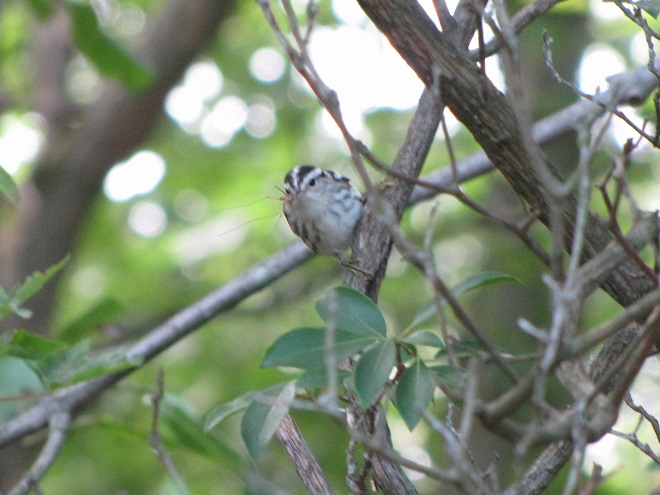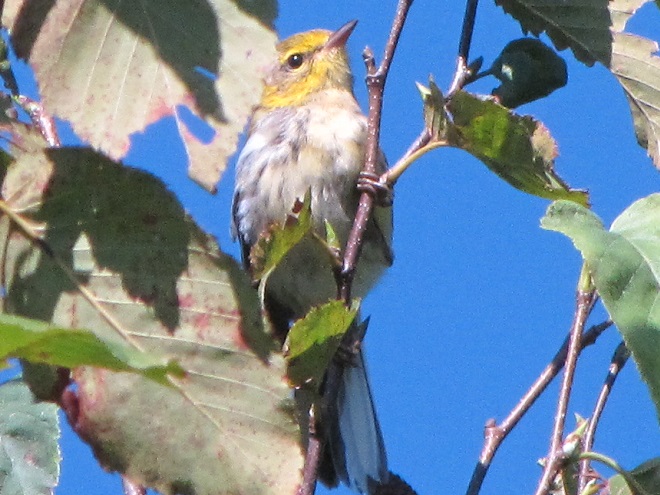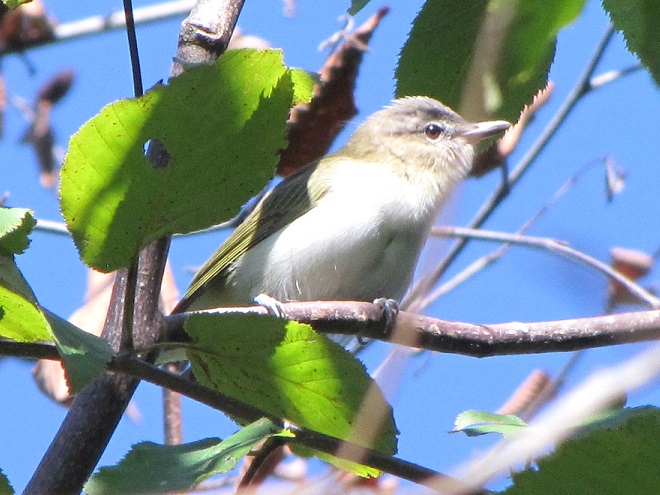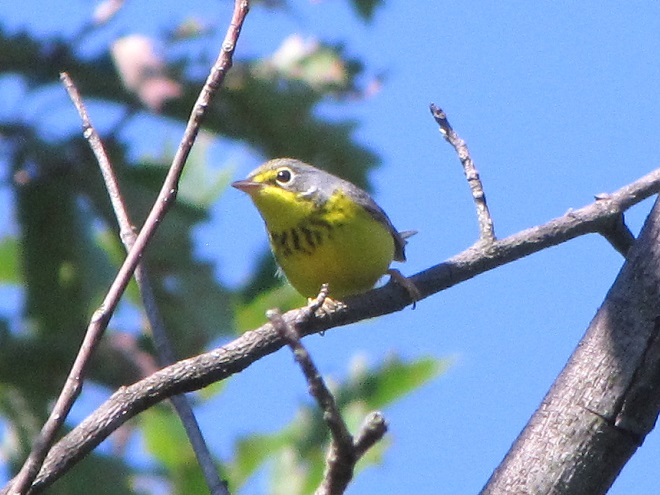Neotropical birds are presently migrating south from breeding habitats in the United States and Canada to wintering grounds in Central and South America. Among them are more than two dozen species of warblers—colorful little passerines that can often be seen darting from branch to branch in the treetops as they feed on insects during stopovers in the Lower Susquehanna River Watershed.
Being nocturnal migrants, warblers are best seen first thing in the morning among sunlit foliage, often high in the forest canopy. After a night of flying, they stop to feed and rest. Warblers frequently join resident chickadees, titmice, and nuthatches to form a foraging flock that can contain dozens of songbirds. Migratory flycatchers, vireos, tanagers, and grosbeaks often accompany southbound warblers during early morning “fallouts”. Usually, the best way to find these early fall migrants is to visit a forest edge or thicket, particularly along a stream, a utility right-of-way, or on a ridge top. Then too, warblers and other Neotropical migrants are notorious for showing up in groves of mature trees in urban parks and residential neighborhoods—so look up!





Be sure to visit the Birds of Conewago Falls page by clicking the “Birds” tab at the top of this page. There, you’ll find photographs of the birds, including warblers and other Neotropical migrants, that you’re likely to encounter at locations throughout the Lower Susquehanna River Watershed.
